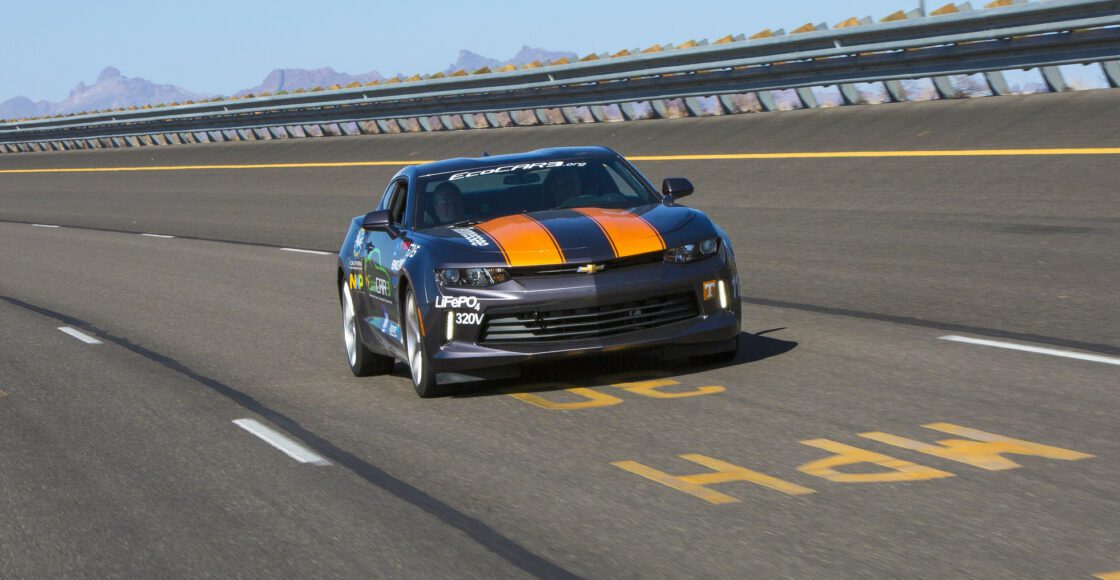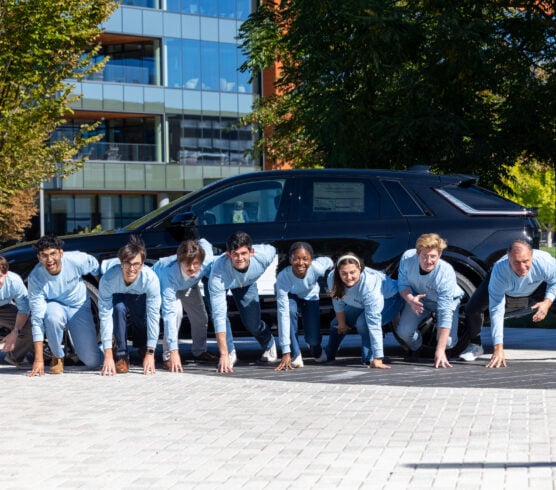It’s official.
Our 16 teams now have their marching orders in place for the remaining three years. They have finalized their engine plans and are gearing up to receive their 2016 Chevrolet Camaros donated by General Motors.
To imagine a greener future for this iconic car, the teams spent a considerable amount of time researching the needs and expectations of their regional consumer base. They looked at psychographic, demographic and socioeconomic factors to gain a thorough understanding of how best to design and market the ultimate energy-efficient, high-performance Camaro.
Using this insight, they submitted their top three choices for architecture designs (powertrain and fuel) to the program organizers who will now pool together the resources to get the hardware, software and mentors needed to make the competitors’ dreams a reality.
The teams could explore a wide variety of powertrain configurations ranging from a pure electric vehicle to a traditional hybrid vehicle. For fuel, the teams could select from the following options:
- E10 – a low-level blend composed of 10 percent ethanol and 90 percent gasoline;
- E85 – a renewable fuel made from plant material that is a gasoline-ethanol blend containing 51 to 83 percent ethanol; and,
- B20 – a common biodiesel bend with 20 percent biodiesel and 80 percent petroleum diesel.
While the EcoCAR 3 vehicles remain prototypes throughout the competition, this exercise in selecting a target market audience and designing a vehicle’s architecture mirrors the real-world product development process.
To our surprise, 15 of the 16 teams envisioned a very similar green Camaro of the future: a plug-in hybrid electric vehicle (PHEV) powered by E85. A PHEV has an internal combustion engine, one or more motors and is recharged using the electrical grid. Typically, PHEVs use electricity first and once the battery is depleted, the engine turns on and the fuel is used operating like a traditional hybrid vehicle.

The one team that bucked the trend is the University of Tennessee, Knoxville. They are pursuing a hybrid electric vehicle powered by E10.
Here is the list of participating schools and the vehicle architecture they will be perfecting over the next three years:
- University of Alabama – Series-Parallel Plug-In Hybrid Electric Vehicle powered by E85
- Arizona State University – Parallel Plug-In Hybrid Electric Vehicle powered by E85
- California State University, Los Angeles – Parallel Plug-In Hybrid Electric Vehicle powered by E85
- Colorado State University – Parallel Plug-In Hybrid Electric Vehicle powered by E85
- Embry-Riddle Aeronautical University – Series-Parallel Plug-In Hybrid Electric Vehicle powered by E85
- Georgia Institute of Technology – Parallel Plug-In Hybrid Electric Vehicle powered by E85
- McMaster University – Series-Parallel Plug-In Hybrid Electric Vehicle powered by E85
- Mississippi State University – Series-Parallel Plug-In Hybrid Electric Vehicle powered by E85
- The Ohio State University – Series-Parallel Plug-In Hybrid Electric Vehicle powered by E85
- Pennsylvania State University – Parallel Plug-In Hybrid Electric Vehicle powered by E85
- University of Tennessee, Knoxville – Parallel Hybrid Electric Vehicle powered by E10
- Virginia Tech – Parallel Plug-In Hybrid Electric Vehicle powered by E85
- University of Washington – Series Plug-In Hybrid Electric Vehicle powered by E85
- University of Waterloo – Series-Parallel Plug-In Hybrid Electric Vehicle powered by E85
- Wayne State University – Parallel Plug-In Hybrid Electric Vehicle powered by E85
- West Virginia University – Parallel Plug-In Hybrid Electric Vehicle powered by E85




